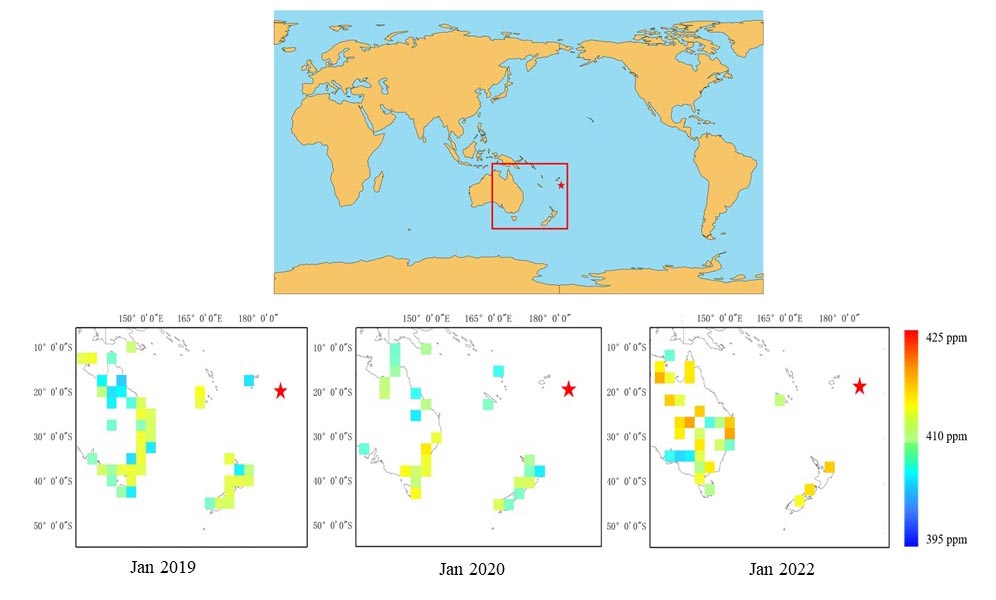
The massive underwater volcanic eruption in Tonga has brought heated discussions concerning how it may affect the global climate.
A research team led by Prof. XIONG Wei from the Hefei Institutes of Physical Science of the Chinese Academy of Sciences (CAS) has been monitoring and analyzing the greenhouse gas concentrations before and after the volcanic eruption in Tonga with the Greenhouse Gases Monitoring Instrument (GMI).
They inverted the greenhouse gas monitoring data over Australia and New Zealand near the volcano in January 2019, January 2020 and January 2022.
After the Tonga volcano erupted in January 2022, carbon dioxide (CO2) concentrations near the volcano soared to around 414 parts per million (ppm), according to researchers
"Tons of CO2 was let off into the air during the eruption," said YE Hanhan, one of the researchers, "the accumulation is caused just by gas overflow and eruption."
the inter-annual fluctuation of atmospheric CO2 concentration over land in the southern hemisphere has been increasing with a relatively stable speed before the eruption. The inter-annual fluctuation of CO2 was about 2 ppm each year.
Prior to the eruption, interannual fluctuations in atmospheric CO2 concentration over land in the Southern Hemisphere had been increasing at a relatively steady rate.
GMI was equipped on the Hyperspectral Observation Satellite (GF-5B) and the Gaofen-5 Satellite (GF-5) to monitor the global distribution of greenhouse gases (i.e., CO2 and CH4) from space.
In the future, GMI will strengthen the monitoring of atmospheric CO2 generated by volcanic activity and further assess the impact on the global ecological environment and climate change.

GMI in space helps to evaluate greenhouse gas around Tonga before and after the eruption. (Image by YE Hanhan)

86-10-68597521 (day)
86-10-68597289 (night)

52 Sanlihe Rd., Xicheng District,
Beijing, China (100864)

